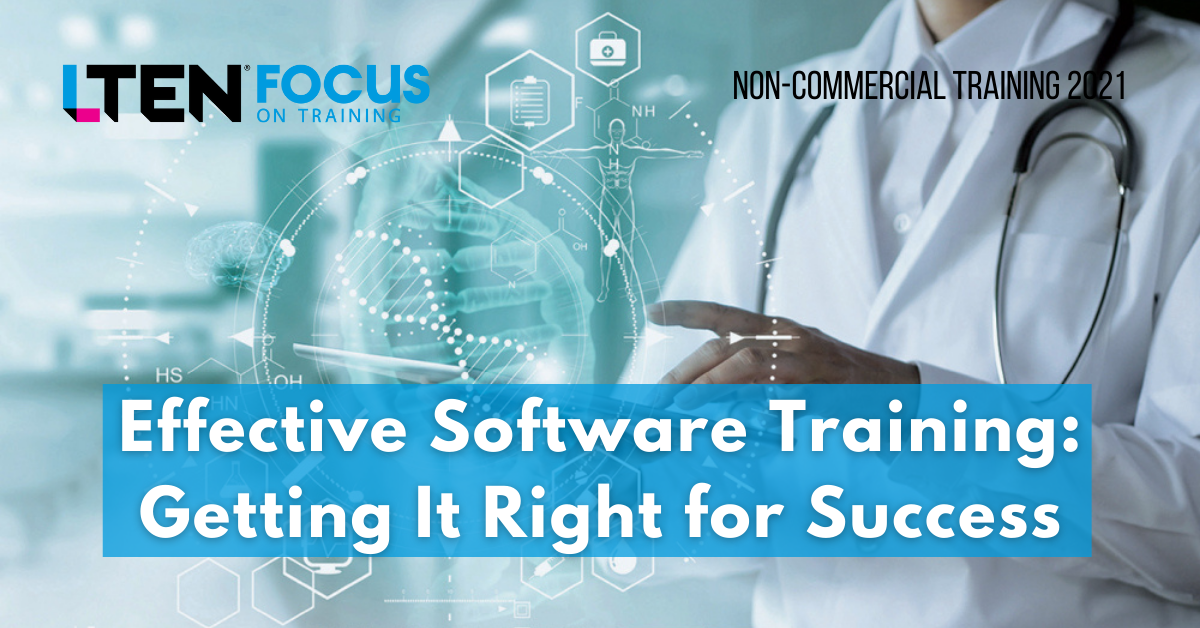
Effective Software Training: Getting It Right for Success
Feature Story – By Bill Beyer
Both systems and users must be trained and validated
Systems training is necessary for teams to perform effectively and achieve business success. Regulated teams operate in highly configured, highly complex quality management systems (QMS) and electronic document management systems (EDMS) to perform their job responsibilities. Furthermore, the industry is heavily regulated and a frequent target for health authority audits.
As a result, both your systems and users must be trained and validated to ensure they are working correctly. But, due to the level of the configuration required of these systems, it’s difficult to conduct a one-size-fits-all training. Bandwidth issues make it nearly impossible to create specialized training when systems are migrated or updated.
 Mitigating ‘Training as Usual’
Mitigating ‘Training as Usual’
In a typical scenario, you’ll know your employees need training and have at least identified their respective system roles or level of access. Once you’ve developed, assigned and completed training, you may hear a common refrain:
“I still don’t know how to do this. My old process worked just fine. Now, I have no idea how our business process works within this new software, or who to hand it off to … HELP!”
A worst-case scenario will occur if you leave your “training” to a read-and-understand instructional PDF — or worse, to the software’s help section.
Aside from the team not knowing how to use your new, expensive systems in a compliant manner, you may be inviting observations from health authorities. Inspectors will note where they see deficiencies — such as inadequately trained staff on software usage or failure to follow standard operating procedures (SOPs) — that could translate into more than just suboptimal operational efficiencies.
Most companies choose to implement sporadic, just-in-time training or do nothing. Deficiencies in training may include:
- Inadequate training materials from the software supplier, such as dated PowerPoint slides.
- Lack of context between business processes and software system processes, leading to non-compliance and giving learners the inability to relate a system function to their job: the “what’s in it for me? (WIFM)” syndrome.
- Lack of tying legacy systems to the new software: Forgetting to relate functions of the new software to the old; people who knew how to do their job now need to know where the new tools are kept.
A haphazard training approach leads to a lack of system familiarity and (human nature being what it is) results in improperly trained employees “faking it” rather than asking for help. Poor QMS and EDMS software training also can result in data integrity issues, unintentional (or intentional) falsification of data, poor document management and — worst of all — a real risk to patient safety.
Relating to Day-to-Day Tasks
 Training represents a cost, in both time and money. But like most business process changes, choosing not to train effectively is always more costly in the long run.
Training represents a cost, in both time and money. But like most business process changes, choosing not to train effectively is always more costly in the long run.
A worthwhile training program will include a seamless transition from business processes to your new systems. This leaves participants with actionable content that provides practical solutions to tough challenges by tailoring that content in a way that it is relatable to their specific work environment.
Ask yourself these questions:
- What is the business process that you’re trying to reorganize, and will it aid industry compliance?
- Which internal stakeholders can you identify who will be impacted by the new software, either input or output?
- What efficiencies will your team appreciate and advocate for, post-launch?
Answering these critical questions essentially creates your training road map, critical questions essentially creates your training road map, providing you with a deep and documented understanding of both current and future processes.
For instance, if you’re using a QMS in a clinical environment, you’ll have stakeholders from clinical trial sites, contract research organizations and clinical project teams providing input on reviewing the system. These people should be an integral part of your training plan as well.
This will provide you — as a trainer — with a better understanding of what each user will need to know before the system is implemented, and you’ll be able to match the learning activity to the correct training vehicle, whether it’s classroom instruction, elearning, virtual reality or other methods.
Expanding Your Training Bandwidth
Sure, the steps outlined above sound great in a vacuum, but the reality of resources and bandwidth may make internal training program design impossible. Outsourcing this activity to a trusted supplier is always an option.
When sourcing a training partner, it is important to find a supplier with the correct blend of experience in developing system training and an understanding of your business processes. They should be able to take your SOPs and user requirement specification and help select meaningful examples to use in the system for training purposes.
A good training company also will provide native files for internal updates and quick reference guides, ensuring you have a robust, durable curriculum. Make sure your provider grants you ownership of the materials so you can update them in perpetuity.
Furthermore, your partner should work with you to understand your company’s personnel and identify people with institutional knowledge to help answer questions after the training session. These are your advocates for continuing success.
Validating the Effectiveness
A reasonable expectation of any training is that end users will use the software in a way that’s dependable, repeatable, consistent and compliant. They should also be able to impart that knowledge to others. If you have a measurable outcome, you have something to gauge the success of the training.
Consider:
- Are your business processes streamlined?
- Are you seeing a decrease in process deviations?
- Can you trace better, more robust corrective and preventive actions back to your systems and, ultimately, training?
- How are the team members feeling about it? Do they ask good questions and share with each other?
Bottom line? An effective training program is going to align the software to your team’s workflow and your business objectives.
Bill Beyer is director of training at Red Nucleus. Email Bill at bbeyer@rednucleus.com.








